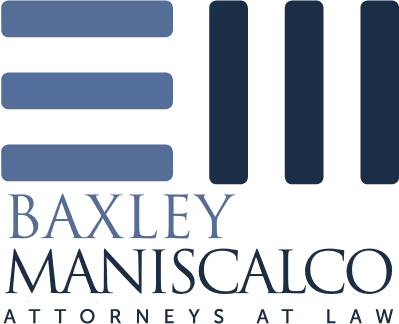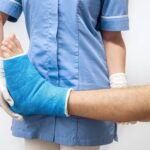
Did you know that T-bone accidents account for nearly 13% of all traffic fatalities in the United States?
These side-impact collisions, often occurring at intersections, can have devastating consequences for drivers and passengers alike.
Understanding the causes, legal implications, and steps to take after a T-bone accident is crucial for Alabama residents navigating the aftermath of such incidents.
What Is a T-Bone Accident?
A T-bone accident, also known as a broadside collision, occurs when the front of one vehicle strikes the side of another, forming a “T” shape upon impact. These accidents often result in severe injuries due to the limited protection offered by a vehicle’s side panels.
T-bone accidents commonly happen at intersections, parking lots, and when vehicles turn onto busy roads. The force of impact in these collisions can cause significant damage to both vehicles and severe injuries to occupants.
Common Causes of T-Bone Accidents
Understanding the root causes of T-bone accidents can help drivers stay vigilant and avoid these dangerous situations.
Here are some of the most frequent causes:
- Running red lights or stop signs;
- Distracted driving (e.g., texting, eating, or adjusting the radio);
- Drunk or impaired driving;
- Failure to yield right-of-way;
- Speeding through intersections;
- Poor visibility due to weather conditions or obstructions;
- Mechanical failures, such as brake malfunctions; and
- Misjudging the speed or distance of oncoming traffic.
These factors can contribute to the split-second decisions that lead to T-bone collisions. By being aware of these common causes, drivers can proactively reduce their risk on Alabama roads.

Legal Implications of T-Bone Accidents in Alabama
Regarding T-bone accidents, Alabama law plays a crucial role in determining liability and compensation.
Here are key legal aspects to consider:
Contributory Negligence
Alabama follows the contributory negligence rule, which can significantly impact accident claims. Under this rule, if a plaintiff is found to be even 1% at fault for the accident, they may be barred from recovering any damages. This makes it essential to establish clear fault in T-bone accident cases.
Statute of Limitations
In Alabama, the statute of limitations for personal injury claims, including those arising from T-bone accidents, is generally two years from the date of the accident.
Fulfilling a claim within this timeframe is crucial to preserve your right to seek compensation.
Proving Fault
Establishing fault in a T-bone accident often involves:
- Gathering evidence from the accident scene;
- Obtaining witness statements;
- Reviewing traffic camera footage;
- Analyzing police reports; and
- Consulting with accident reconstruction experts.
The plaintiff has the burden of proof to demonstrate that the other driver was negligent and that this negligence caused the accident and resulting injuries.
Potential Damages
Victims of T-bone accidents in Alabama may be entitled to various types of damages, including:
- Medical expenses (past and future);
- Lost wages and loss of earning capacity;
- Pain and suffering;
- Property damage;
- Loss of consortium (for spouses); and
- Punitive damages (in cases of extreme negligence).
The specific damages available depend on each case’s circumstances and the injuries sustained.
Steps to Take After a T-Bone Accident
If you’re involved in a T-bone accident in Alabama, taking the right steps immediately afterward can protect your health and legal rights.
Here’s what you should do:
- Check for injuries and call 911 if necessary;
- Move to a safe area if possible, without leaving the scene;
- Exchange information with the other driver(s) involved;
- Document the accident scene with photos and videos;
- Gather contact information from witnesses;
- Seek medical attention, even if you feel fine;
- Report the accident to your insurance company; and
- Consult with an experienced car accident attorney.
Remember, your health and safety should always be your top priority. Even if you feel uninjured, some injuries may not be immediately apparent, so it’s important to get checked by a medical professional.
Frequently Asked Questions About T-Bone Accidents
To address common concerns about T-bone accidents in Alabama, here are answers to frequently asked questions.
Who Is Typically at Fault in a T-Bone Accident?
Fault in T-bone accidents often lies with the driver who failed to yield right-of-way or violated traffic laws. However, each case is unique, and multiple factors can contribute to determining fault.
How Can I Prove the Other Driver Was at Fault for the T-Bone Accident?
Evidence such as traffic camera footage, witness statements, police reports, and expert testimony from accident reconstruction specialists can help establish fault. Preserving evidence from the accident scene is crucial.
What If Both Drivers Claim They Had the Green Light in a T-Bone Accident?
In such cases, additional evidence becomes critical. This may include witness testimonies, traffic camera footage, or expert accident scene analysis.
An experienced attorney can help gather and present this evidence effectively.
Can I Still Recover Damages If I Was Partially at Fault for the T-Bone Accident?
Alabama’s contributory negligence rule makes it challenging to recover damages if you’re found to be even slightly at fault. However, an experienced attorney may be able to help you navigate this complex legal landscape.
How Long Do I Have to File a Lawsuit After a T-Bone Accident in Alabama?
The statute of limitations for personal injury claims in Alabama is generally two years from the date of the accident. It’s crucial to consult with an attorney as soon as possible to ensure you don’t miss this deadline.
What Types of Injuries Are Common in T-Bone Accidents?
Common injuries include whiplash, head and brain injuries, spinal cord injuries, broken bones (especially ribs and limbs), internal organ damage, and psychological trauma. The severity often depends on the point of impact and the vehicles’ speeds.
How Can I Protect Myself from T-Bone Accidents?
To reduce your risk, always obey traffic signals, look both ways before entering intersections (even with a green light), avoid distractions while driving, and be cautious when turning onto busy roads.
Expert Legal Support for Your T-Bone Accident Claim
T-bone accidents remain a serious concern on Alabama roads, with potentially life-altering consequences for those involved.
Stay safe on the roads, be aware of your surroundings, and always prioritize defensive driving techniques.
At Baxley Maniscalco, our experienced team of attorneys specializes in handling T-bone accident cases and can help you understand your rights and options.
Don’t let the statute of limitations expire on your claim. Contact us today for a free, no-obligation consultation. We’ll review your case, answer your questions, and help you determine the best path forward.
Can't find what you're looking for? Search our site below.










